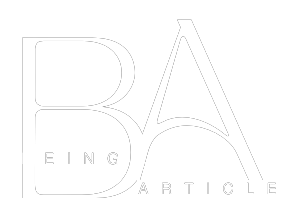How To Read Vedas?
Reading the Vedas, which are ancient Hindu scriptures, can be challenging as they are written in an archaic form of Sanskrit and contain complex philosophical and ritualistic concepts. To read the Vedas, it is recommended to first understand Hinduism, its beliefs, and its history. Studying the language and grammar of Sanskrit can also be helpful to better understand the text. A good way to approach the Vedas is to start with the Rigveda, the oldest and most important Veda, and read it alongside commentaries by renowned scholars. It is also recommended to seek guidance from a qualified guru or spiritual teacher who can provide insights and interpretations based on their knowledge and experience.
The Vedas are one of the world’s oldest and most sacred scriptures. They are said to be replete with revelatory knowledge, revealed to the ancient sages and passed down orally.
There are four Vedas, Rig Veda, Yajur Veda, Sama Veda and Atharva Veda. They each teach the three paths to salvation, namely jnana (knowledge), bhakti (devotion), and karma (action).
Rig Veda
Vedas are Hindu religious texts that were compiled over thousands of years. They contain hymns, mantras, other sacred texts, and instructions for performing religious rituals. They are also a source of Hindu beliefs about the gods, marriage and funeral rites, and animal sacrifice.
The Rig Veda is among the oldest and most famous of the four main Vedas. It is a collection of Sanskrit hymns written in the Vedic language and includes more than one thousand poems. It is also a source of information on the creation of the universe.
It is the first Veda to be written and is the most important for learning the history of ancient India. Moreover, it is the main source of knowledge for Hindus about how to live a spiritual life, as well as about philosophy and science.
The Vedas were written in the Sanskrit language, a lingua franca that evolved from Indo-European languages, and is the language of most modern Indians. It has a number of different dialects, each containing specific vocabulary and grammar rules.
Vedas can be read in a variety of ways, but the most common method is to read them in verses or stanzas. This form of reading is called sruti, which means “revelation.” The Vedas are organized into a series of collections or Samhitas that each contain a collection of hymns and other text.
Some of Rig Veda’s most popular poems include the praise of Agni, the priest god; Lord Vishnu, a minor god in the Hindu pantheon; and the universal Gayatri mantra (Savitri). In addition to these hymns, the Vedas contain ideas about how people are divided into various classes of society.
For example, it describes the varna system, a system of social classes that divided people into Brahmans and Brahmashastras. It also discusses the concept of Sudra, which is a type of slave.
The Rig Veda is also a key source for understanding the evolution of human society and religion. It contains ideas about how to build a better world and how to worship the gods. It also contains hymns about karma, which is the act of working for the benefit of others.
Sama Veda
The Sama Veda is one of the four main Vedas in Hinduism. It is a collection of melodies and chants that are used in religious practices. Hence, it is sometimes called the “Book of Song,” “Veda of Chants,” or even “Yoga of Song.”
The Vedas are a collection of sacred texts that were written in Sanskrit. They contain the basic laws of life and are considered the guidebook for human beings to achieve enlightenment.
In addition to the Vedas, there are also Upanishads which help us to understand more about the nature of life and God. These Upanishads were originally written in the ancient Vedic period and are still used today.
Unlike the Rig Veda, which is only meant to be read orally, Sama Veda can be read and sung. It is a collection of hymns, songs, and prayers traditionally used during Yagya, rituals, and Havan.
It is divided into 13 branches. It is composed of around 1900 verses and was compiled during 1200 or 1000 BCE. The Sama Veda is primarily meant for religious use but contains some philosophical teachings.
The first part of the Sama Veda, known as the Prakriti, contains hymns meant to be sung in homes and villages. They praise gods like Agni, Indra, and Soma.
This part of the Veda also includes the Chandogya Upanishad and Kena Upanishad. It also has several other Upanishads that teach about the importance of the Vedas and how to use them for spiritual growth.
The second part of the Veda, known as the Uttararchika, has the mantras intended to be sung during the ceremonies such as the Soma sacrifice. These are mainly meant for religious purposes, but some secular songs were meant to be sung during agricultural rites and soma ceremonies.
Atharva Veda
The Atharva Veda is considered the storehouse of all the procedures for everyday life. It is also the precursor of Ayurveda, a science of health and longevity. In addition, it contains prayers for curing diseases and a wide range of mystical ideas about maintaining physical and spiritual health.
The Veda has over 7,000 suttas (hymns) written in the Sanskrit language and can be read by anyone with some knowledge. It is considered one of the three great Vedas of Hinduism, along with the Rig Veda and the Sama Veda.
Unlike the other Vedas, this one does not have an author but is credited to several rishis who wrote it in the Vedic period. It has two surviving recensions, a Shaunakiya, and a Paippalada.
This Veda is considered a very important book in Hinduism, which is why it is often used as a guide to chanting the Vedas or as a source of ayurvedic medical advice. It is a comprehensive book, including instructions on chanting mantras and other religious practices.
It also contains many mystic chants and spells meant to heal, harm, or seek protection from harmful forces. It is also a very useful text for learning about Vedic religion and philosophy, which is why it is often included in courses on Vedic studies.
There are also a few important suttas that talk about yogic meditation and how to achieve the goal of enlightenment through this practice. These suttas have a lot of wisdom, so they are very popular.
These suttas are not as easy to read as the other Vedas, especially the Rgveda, but they can be understood and learned if you are willing to put in the effort. You can even find some good English translations of these suttas online.
You can also use these suttas to guide your yoga practice. For example, these suttas can help you focus on your breathing and how to control it, eventually leading to enlightenment.
Yajur Veda
The Yajur Veda is an ancient collection of Sanskrit mantras and chants in Hindu worship and rituals. It is one of the four primary scriptures of Hinduism known as the Vedas. The other three are Rig Veda, Sama Veda, and Atharva Veda.
The main purpose of the Vedas is to explain the rituals of Hindu worship and provide knowledge on how to perform them. In addition, they contain rules and regulations for performing sacrificial rituals such as the Darsapurnamasa and Asvamedha sacrifices. The hymns from the Yajur Veda are also considered part of the Vedic canon and are often sung during religious celebrations.
Some scholars believe that the Yajur Veda was written from 1,400 BC to 1,000 BC in the Sapta-Sindhu region of the northwestern Indian subcontinent. Other historians believe it was written in the Kurukshetra area (of modern Haryana) during the same period as the Rig Veda.
A popular legend in Hindu mythology explains how the Yajur Veda was first divided into two parts. The first version was a collection of verses and chants organized by Krishna Dwaipayana Vyasa. In contrast, the second, which Maharishi Yagnyavalkya later arranged, was known as the Shukla Veda.
A story in the Mahabharata describes how Sage Vaishampayana taught the Veda to his disciples. However, once one of his students, Yajnavalkya, committed a sin that required the performance of a sacrificial rite on his behalf, Vaisampayana got angry and asked him to give back what he had taught him.
After that, Yajnavalkya threw away the Veda that he had learned and prayed to the Sun. The Sun descended as a horse and gave him back what he had lost.
The story is not entirely true, but it does give an interesting insight into how the Vedas were first divided into two parts. The dark or “Shukla” Yajur Veda was born when the followers of Vaishampayana spit out the words of the Veda that they had learned.
The white or “Krishna” Yajur Veda resulted from Yajnavalkya’s prayer to the Sun, who descended like a horse. The birds that spit out the grains of knowledge were named Tittiriya, or “Tittira Birds.”
Vedas Reflect Which Religion?
Vedas are a collection of scriptures that are said to be eternal and reveal the secrets of God. These are also called “written books.”
They are a major part of the Hindu religion. They are divided into three sections: Brahmanas, which deal with religious rituals and sacrifices; Samhitas, which are hymns to various deities; and Upanishads, which focus on meditation and philosophy.
Hinduism
Hinduism is one of the world’s oldest religions, with beliefs dating back over 5,000 years. It is a mystical religion rich in traditions and rituals, and its spiritual texts have influenced many other faiths worldwide.
The Vedas are considered the most sacred scriptures in Hinduism and are the source of every Hindu tradition. They are a collection of hymns and prayers, which contain spiritual knowledge passed down from generation to generation since they were written. Hence, they are known as Veda, meaning “knowledge.”
Vedas are written in Sanskrit and contain ancient teachings about God. They are a part of Hinduism’s religious heritage and have been preserved in India for thousands of years.
According to Hindu beliefs, the Vedas were revealed by God at the beginning of creation. They serve as a guide for all beings to live their lives. They also provide a model for the order and regularity of life.
The Vedas were originally written in Sanskrit, a language the ancient Indo-Aryans spoke. They are considered the most ancient writings in all of history, and their wisdom is revered by Hindus today.
They are a collection of hymns and religious instruction that contain spiritual knowledge about God and the universe. They are considered the most sacred scriptures in Hinduism, often called the Vedas.
Each Veda contains a different set of mantras, or spiritual songs, chanted by the faithful. These hymns are based on the idea of the divine and reincarnation. They are important to Hindus because they explain how the soul lives multiple lives to achieve enlightenment.
This idea of reincarnation is found in many other aspects of Hindu belief. For example, they believe people are born into different social classes based on their karma. These castes include Brahmins, Kshatriyas, Vaishyas, and Shudras.
In addition, Hindus believe that there is a cyclical nature to time. This is because every action affects the future. For example, if you make bad decisions, your future will be filled with hardship. But if you make good choices, your future will be happy and prosperous.
Buddhism
Buddhism is a religion that originated about 2,500 years ago when Siddhartha Gotama, known as the Buddha, was enlightened. It is a belief system based on several different principles, including the idea that the world is suffering and that it is necessary to overcome this suffering through the abolition of delusions and the ego.
Buddhism also teaches that there is a purpose to live, that apparent injustice and inequality are due to bad karma, and that a code of practice or way of life can lead to true happiness. So it is a very spiritual religion, using meditation as the primary means to achieve this state of peace and understanding.
Vedas are an important aspect of Buddhism, as they provide knowledge that is helpful to humans in both the material and spiritual aspects of their lives. The Vedas are believed to be eternal and exist in the higher realms of the world called “Brahman.” They manifest at the beginning of every cycle of creation for the well-being of all people. They are an invaluable source of information that can help human beings rise from their embodied, limited states as liberated souls.
The Vedas are divided into four parts: the Rigveda, Samaveda, Yajurveda, and the Upanishads. Each part contains a different collection of hymns or mantras that are recited in a specific manner to produce beneficial vibrations that can help improve people’s physical and spiritual health.
The Vedas have been passed down from generation to generation and are believed to be the result of divine inspiration from God. Hence, these scriptures are often referred to as the mother of knowledge and are regarded as the definitive source of truth.
They are renowned for their beauty and have been transcribed many times in the past and written down in various forms. In addition, they are a great source of spiritual wisdom, as they contain hymns dedicated to different Gods that can help people find their purpose in life.
Jainism
Jainism is a religion that grew in India over many thousands of years. Like Hinduism, it is based on the laws of nature and the truths of the universe.
Jainism has existed since its creation, and its teachings have influenced many other Indian cultures. These include the principles of ahimsa, non-violence, and equality.
A major contribution of Jainism to Indian culture is its teachings of Aparigraha, which prohibits the ownership of any material possessions and urges people to practice self-denial. This helps people to become free from their passions and desires, which can lead to violence in society.
The religion also promotes the theory of karma, which states that all pleasure and pain depend on actions that have occurred in the past. Its goal is to destroy karma through right belief, knowledge, and conduct.
Another important feature of Jainism is that it does not believe in a supreme God. This is because it does not believe that the universe needs a creator, and it does not believe that the world has an end.
Moreover, Jainism believes the universe is more complex than anyone can see. Therefore, to understand something, you need to consider all of your points of view.
Jains use the parable of the five blind men to illustrate this point. They say that each of the blind men saw an elephant differently. Each man interpreted the elephant according to the parts they touched, and each had different ideas about what an elephant was.
While it is true that a person can never fully understand something from only one point of view, the Jains do believe that you can reach a good understanding of your own life if you work hard at it. This means you can change your life to become a better person.
Aside from these philosophies, Jainism has several other features that make it stand out among other world religions. This includes its emphasis on meditation and self-purification. It also teaches that people should be respectful of others and that their actions should have a positive effect on the environment. This makes it a great choice for those looking for a spiritual religion but not dogmatic.
Christianity
Christianity is one of the world’s largest faith systems and has made important contributions to various fields. Its influence is felt in every aspect of the world’s society, from art & literature to laws & policies.
Christian belief centers around a single God, Jesus Christ, who became human to save people from sin and suffering. This belief is based on the Bible, the central religious text of the Christian religion.
The Bible is divided into the Old Testament and the New Testament. The Old Testament describes the story of creation and history, while the New Testament focuses on the life and teachings of Jesus.
Historically, Christianity has survived many challenges and crises, including schism, persecution, and heresy. Nevertheless, religion is still the dominant force in the world today.
Hinduism is the second-largest religion in the world, and the Vedas are an important part of its beliefs. The Vedas are among the world’s oldest religious works and are a source of wisdom, knowledge, and vision.
Vedas contain knowledge about the unmanifest Absolute Reality (Brahman) and how it relates to the manifest aspects of existence. The Vedas also teach how humans can achieve the four essential goals of life: religion, earning wealth, seeking pleasure, and achieving liberation.
However, Vedas are not a substitute for modern science. Instead, they are a collection of ancient ideas that can complement modern science but not contradict it.
The Vedas are a combination of the knowledge of many different cultures, and they provide a holistic perspective on the universe. They explain how the universe came to be, how it works, and why things happen. They also discuss how to deal with the various challenges that come up in life, such as death, illness, and poverty.
The Vedas also have an emphasis on worshipping the divine. They have several hymns that chant in praise of the divine and emphasize its importance. Many Hindu religious observances, such as Navratri and puja, rely on Vedic prayers and rituals.
FAQ’s
What are utility pole markings?
Utility pole markings are symbols, letters, and numbers painted on the surface of a utility pole to indicate information about the pole, such as its ownership, the type of wire it carries, and its location.
Why is it important to read utility pole markings?
It is important to read utility pole markings because they can provide important information about the infrastructure and utilities in your area. Knowing what type of wire or equipment is on a pole can help you avoid potential hazards and ensure you are aware of any utility work in progress.
What do the letters and numbers on utility pole markings mean?
The letters and numbers on utility pole markings can vary depending on the area and the utility company. Some common markings include “E” for electric, “C” for communication, and “T” for cable television. Other markings may indicate the pole’s identification number, the company that owns the pole, or the date the pole was installed.
How do I read utility pole markings?
To read utility pole markings, start at the top of the pole and work your way down. Look for any identifying symbols, such as the company logo or an abbreviation for the utility type. Then, look for any numbers or letters that may indicate additional information about the pole.
Can utility pole markings be used to report problems or outages?
Yes, if you notice any issues with a utility pole, such as a downed wire or damaged equipment, you can use the information on the pole markings to report the problem to the appropriate utility company.
Are there any safety precautions I should take when reading utility pole markings?
Yes, it is important to take safety precautions when reading utility pole markings, especially if you are standing close to the pole or on a ladder. Always wear appropriate safety gear, such as gloves and eye protection, and avoid touching any equipment or wires on the pole.





















